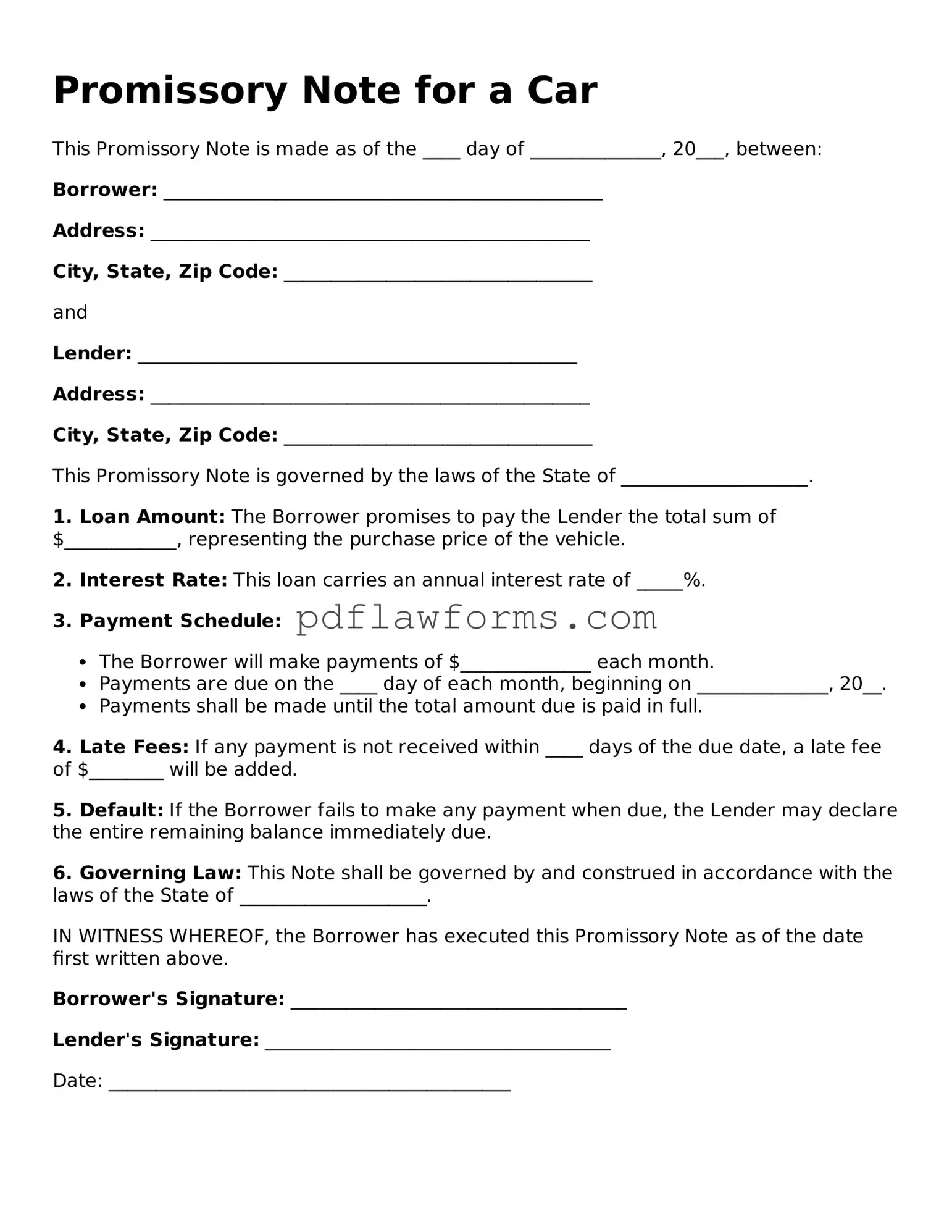Official Promissory Note for a Car Form
A Promissory Note for a Car is a legal document that outlines the borrower's promise to repay a loan taken out to purchase a vehicle. This form includes essential details such as the loan amount, interest rate, and repayment schedule, ensuring clarity between the lender and borrower. If you're ready to secure your car financing, fill out the form by clicking the button below.
Make My Document Online
